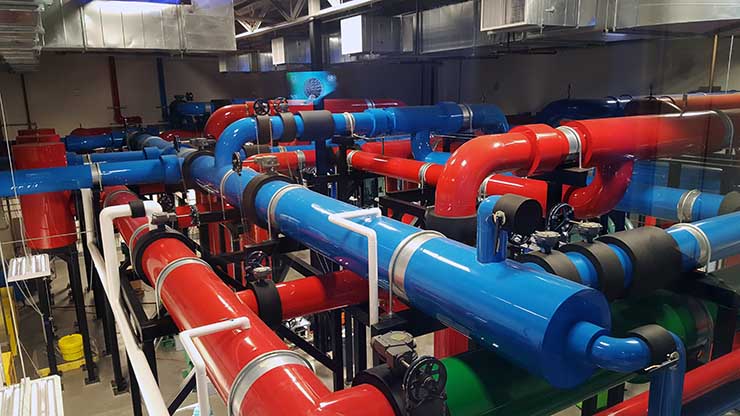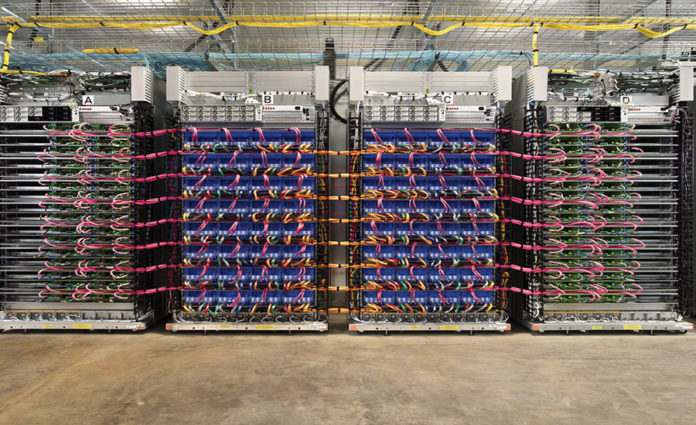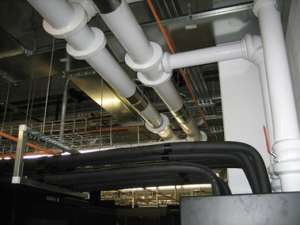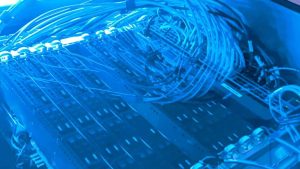Keeping Your Cool in Your Edge Data Center

Cooling capacity is usually ranked first among all issues for an edge data center. The following is a list of requirements:
- Choosing a temperature control system that is ideally suited to the edge data center’s heat output.
- Ensure that each server rack has enough airflow.
- The cooling system’s operational reliability and redundancy, as well as maintaining consistent acceptable temperature and humidity levels.
- Having scalability choices both at the rack level and throughout the entire edge data center.
Considering the Variables in Edge Computing
Edge computing’s heat dissipation and inherent heat concerns necessitate modular climate control systems. Temperature, humidity, airflow, pressure, and heat losses of installed components are all taken into account during development. These aspects are taken into consideration in an energy-efficient and improved climate management and cooling concept for edge computing.
Datacenter’s Hostile Environments

Edge compute solutions provide new issues to supply-side organizations and their partners responsible for installing, maintaining, and supporting them due to their divergent nature.
The edge data center has a brand new look. IT is created with industry-standard technologies and is placed in compact, non-IT-specific ruggedized enclosures in frequently adverse environments.
IT equipment intended for use in cleanrooms and controlled environments will be subjected to extreme temperature swings, airborne pollutants, humidity, and other conditions such as the necessity for noise reduction. Additional considerations include power and water supply limits.
Traditional air cooling will not be able to meet these criteria. Instead, immersive liquid cooling technologies are well adapted to these scattered environments.
Liquid cooling technology has progressed to the point where it can be a feasible solution for demand and supply-side parties dealing with the commercial, logistical, support, and sustainability challenges of installing and maintaining hundreds or thousands of servers.
Possible Solutions For Edge Data Center
Direct Expansion (DX)
The “direct expansion” (DX) cooling system is the most prevalent cooling solution for edge data centers nowadays. This cooling system is available in a variety of configurations, ranging from a high-end CRAC machine to a simple household air conditioner. This technology offers various advantages, including a lower initial investment, the ability to work in virtually any environment, the usage of zero water, and the ability to be serviced and maintained by almost any online provider. This technology also has a number of drawbacks, including low operating efficiency (PUE = 1.25-1.50+), limited flexibility for future load expansion (a 10 kW unit will always remain a 10 kW unit), and a large footprint.
• Chilled Water Distributed Solution

The edge data center may be better served by a distributed refrigerant or a distributed chilled water-cooling solution when the average power density cabinet grows above 10+ kW or when there is a cabinet with a concentrated power density. In an edge data center, these dispersed solutions allow significantly more flexibility in meeting larger and more diverse power loading requirements. These solutions also provide you the option of utilizing water to boost efficiency (PUE = 1.10-1.20).
While dispersed systems are slightly more expensive in terms of capital, they offer significantly more asset resiliency, as evidenced by the capacity to quickly adjust to changing needs without having to replace the entire cooling system. In a dispersed system, a 10 kW unit can simply be upgraded to a 15 kW or 20 kW unit without having to replace the entire unit.
These distributed cooling systems give a considerably better means of incrementally scaling the cooling system to match the scaling capacity from initial deployment to full deployment of the ITE and beyond, as well as using these smaller increments to provide more cooling system reliability.
Free Cooling?
The use of “free” cooling has become more prevalent in larger data centers as a cooling solution. This approach uses once-through ambient air to cool the ITE directly. When the ambient air is a little too warm, this technique is frequently combined with direct water-based evaporative cooling. This could be an advantageous solution for a purpose-built edge data center in a cool or arid area. Due to the vast range of climates and the availability of service in numerous locations, this cooling system will be significantly less practicable for a fleet of smaller edge data centers.
It’s critical to remember that “free” cooling is a low-energy choice, not a zero-energy option. Additionally, “free” cooling will pose new maintenance and air filtration challenges to address, the most important of which is the location near plants or trees that emit pollen, flowers, or fibers into the air, as well as dust or pollutants. These will be taken into account when calculating “efficiency.”
Liquid Cooling

Other factors to consider for the cooling solution are ultra-high-density computer systems, which are now available and are expected to become increasingly common in future computing applications in 2020 and beyond. Edge data centers capable of cooling a “cabinet” housing 40 kW, 80 kW, or 200 kW of ITE will be required – they currently exist.
Advanced cooling systems will be required for these ultra-high-density computing solutions. Direct-to-chip cooling, in which refrigerant, water, or a non-conductive liquid is piped directly into the server chassis, or a complete immersion system, in which computers are loaded into a bath of non-conductive liquid, are examples. These are currently being used in edge data centers, and they have the added bonus of being extremely efficient (PUE=1.05 or below).
The Cooling Decision
The most efficient way to cool the edge computing micro center is via a liquid cooling system, either inline, rack-based or a combination of both. The two heat transfer media that can be used in systems are water and refrigerant. Water has great cooling properties, making it appropriate for the tremendous heat generation of an edge system. When a water source is not readily available, small or medium edge enclosures are excellent for refrigerant-based cooling. Refrigerant cooling is more efficient and has a lower footprint in micro centers. In both cases, energy efficiency is a factor to consider.

The energy-efficient IT climate control system takes account of:
- Cooling systems are dimensioned to match the actual power requirements.
- Aisle partitioning separates cooling for server racks and room air-conditioning.
- Electronically commutated (EC) fans, as well as power management of cooling compressors, are among the energy-efficient components used.
- Maintaining as high a temperature in the cooling water and the room as possible.
- Controlling all subsystems and adapting to the real cooling power requirements on a continuous basis.
Liquid Cooling Monitoring
In today’s data center, monitoring and alarm are required for any system. AKCP Monitoring Solutions offers monitoring and alarms for temperatures, flow, pressures, and leak detection, as well as the ability to report into data center management software suites.
Temperature Sensors
A wireless temperature sensor or K-type thermocouple is used to record and measure the temperatures of the server surface, liquid bath, and intake and exit coolant inside the coils.
Power Monitoring Sensor

A power meter that can monitor and record real-time power usage must be used to monitor the cooling unit’s power. The AKCP Power Monitor Sensor provides critical data and allows you to remotely monitor power, obviating the need for manual power audits and delivering instant notifications to possible problems. SensorProbe+ and AKCPro Server live PUE calculations may also be utilized with power meter readings to assess the efficiency of power use in your data center. The built-in graphing tool may be used to display data gathered over time using the Power Monitor sensor.
Wireless Pipe Pressure Monitoring
The pressure in the tank was monitored by an automatic pressure relief valve with a pressure sensor. Digital pressure gauge for monitoring all kinds of liquids and gasses. Remote monitoring via the internet, alerts, and alarms when pressures are out of pre-defined parameters. Upgrade existing analog gauges.
Wireless Valve Motor Control
Wireless, remote monitoring, and control of motorized ball valves in your water distribution network. Check status and remotely actuate the valves. Receive alerts when valves open and close, or automate the valve based on other sensor inputs, such as pressure gauges or flow meters.
Reference Links:
https://www.datacenterdynamics.com/en/opinions/liquid-cooling-at-the-edge-its-already-here/
https://www.datacenterdynamics.com/en/opinions/designing-optimal-cooling-for-every-edge-data-center-site/
Liquid-Cooled Systems Are Inevitable, But Not Necessarily Profitable
